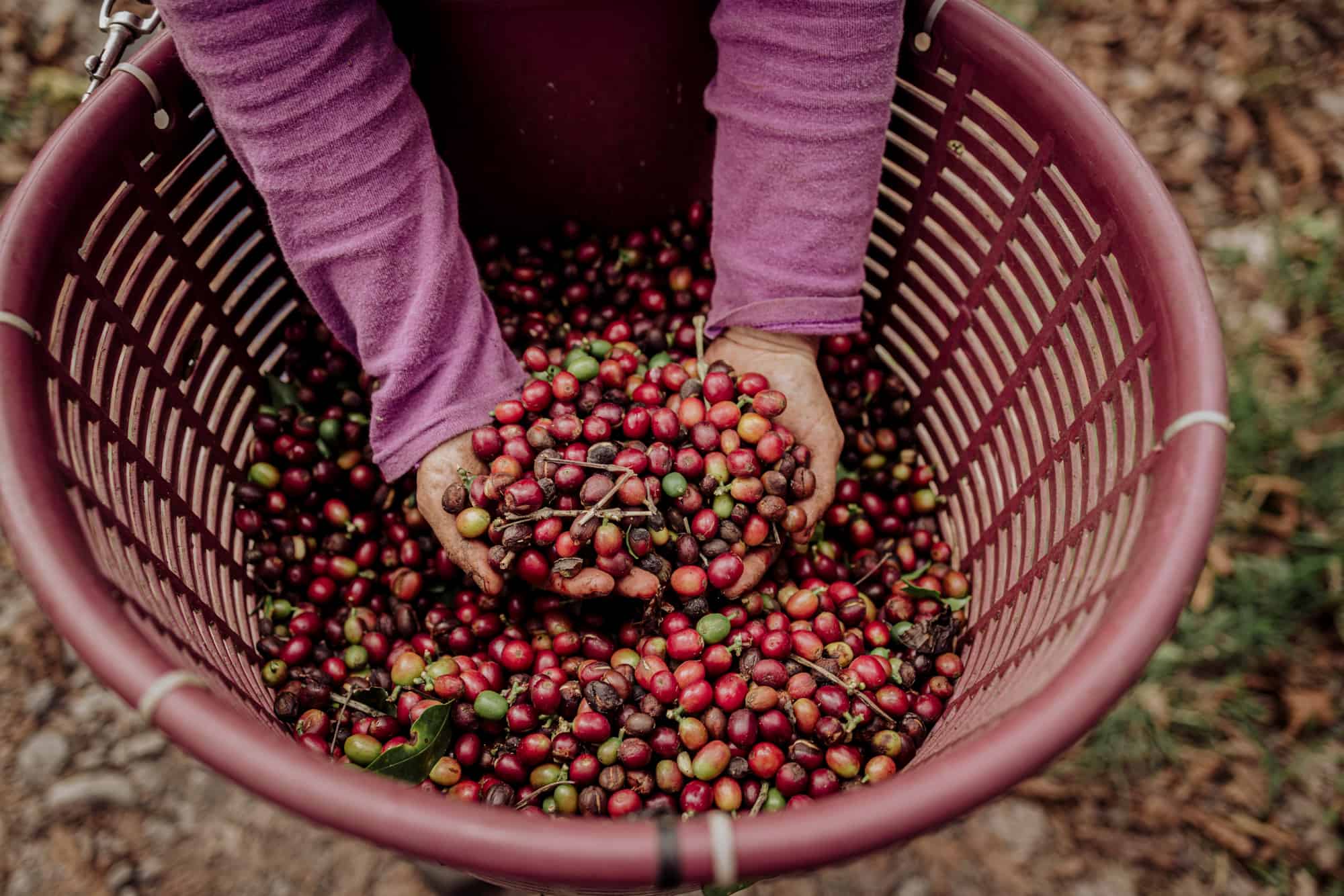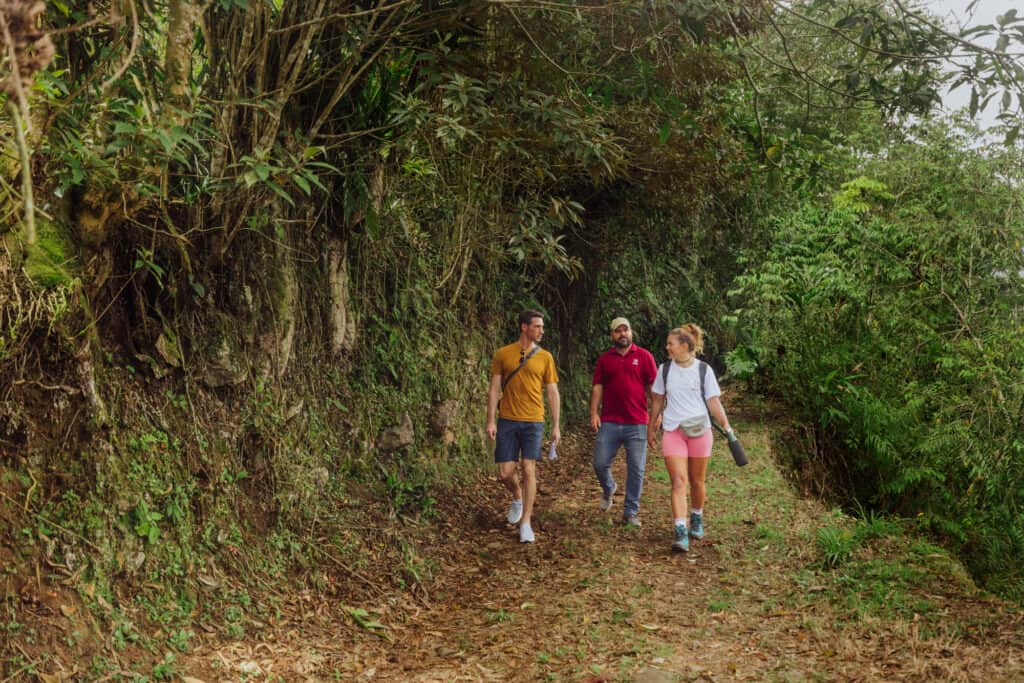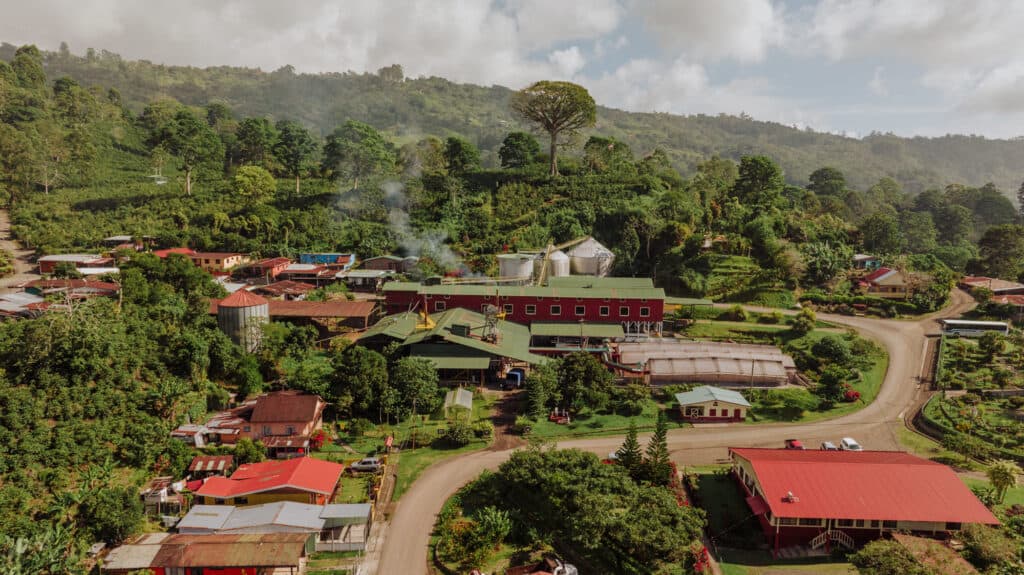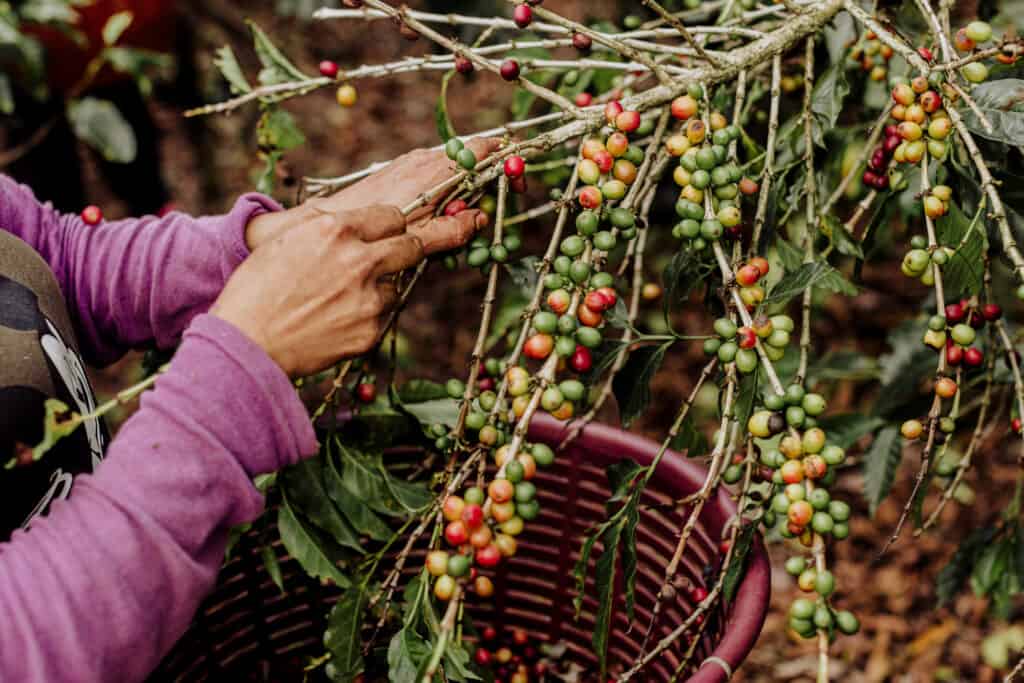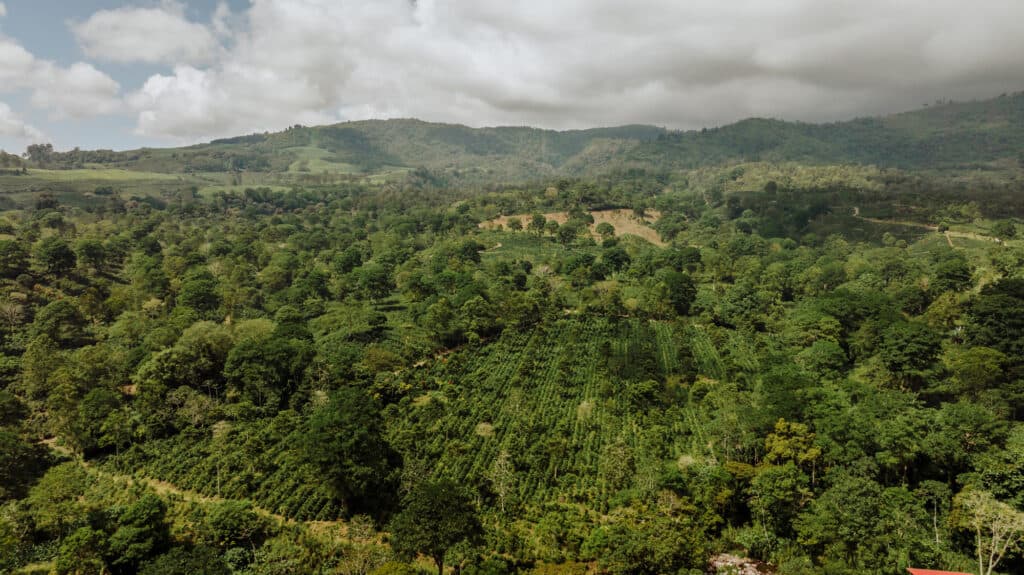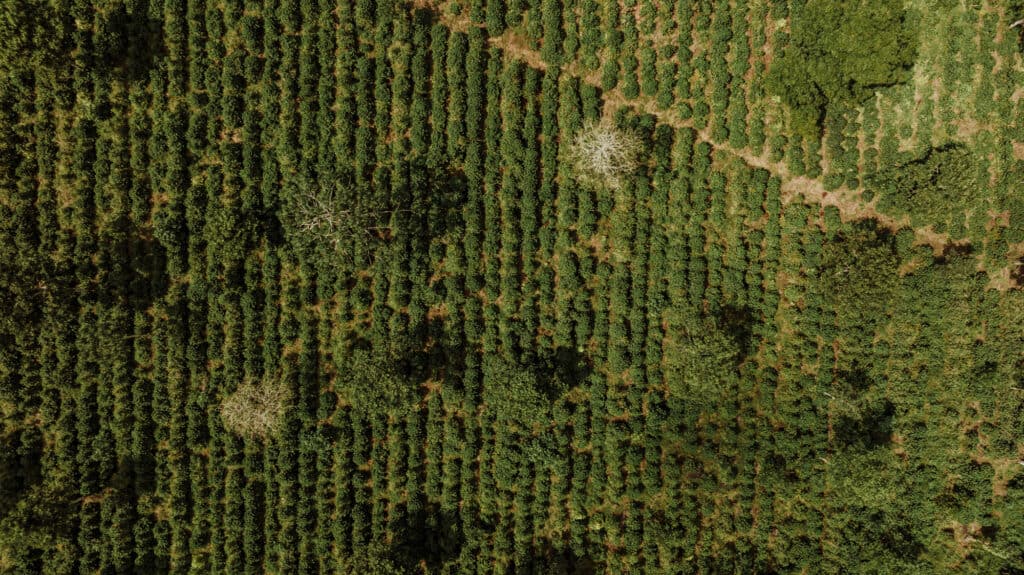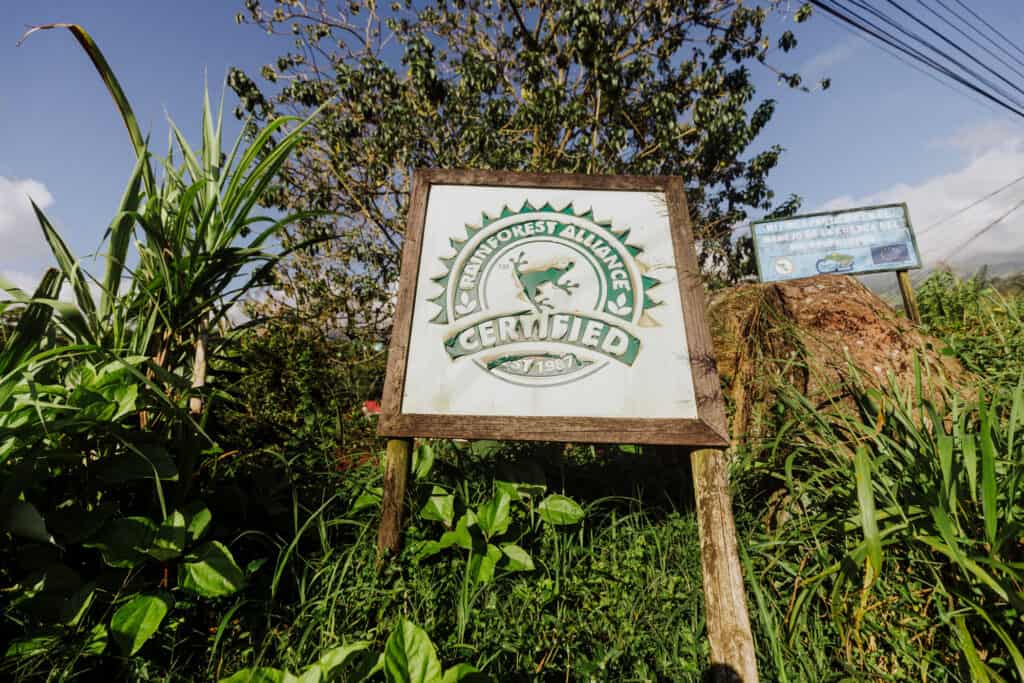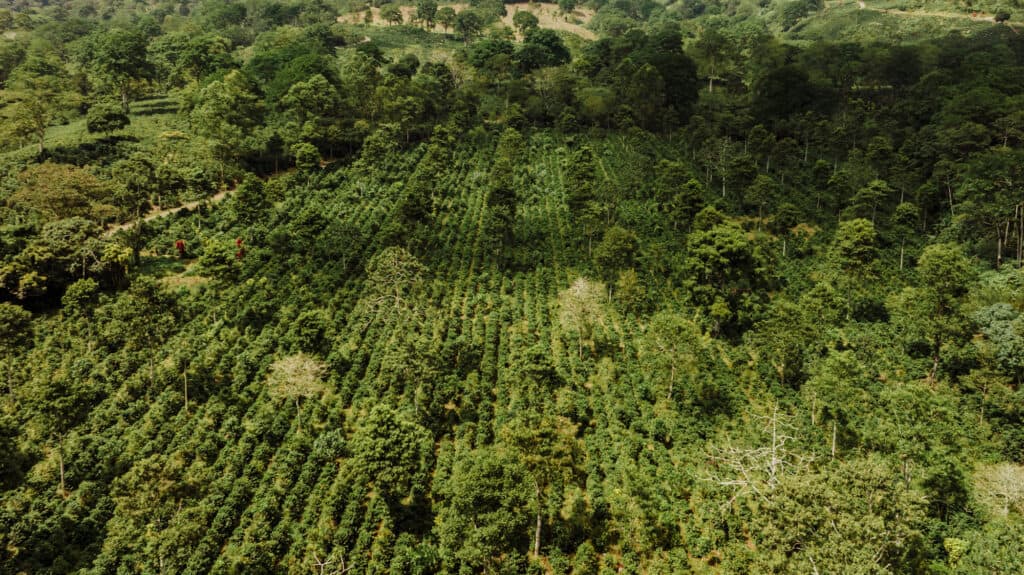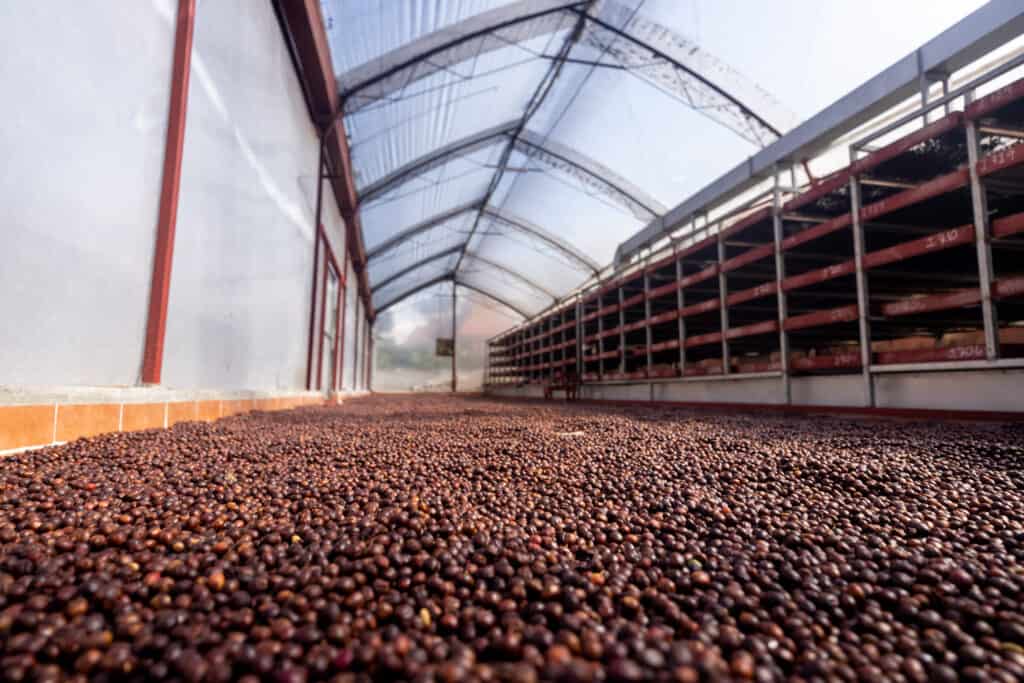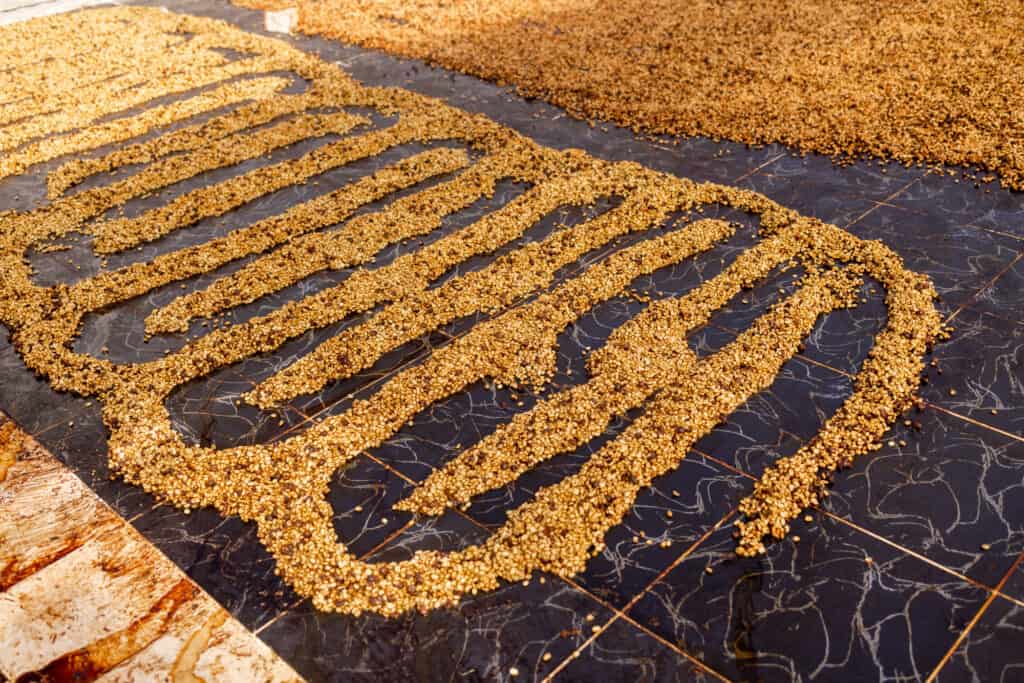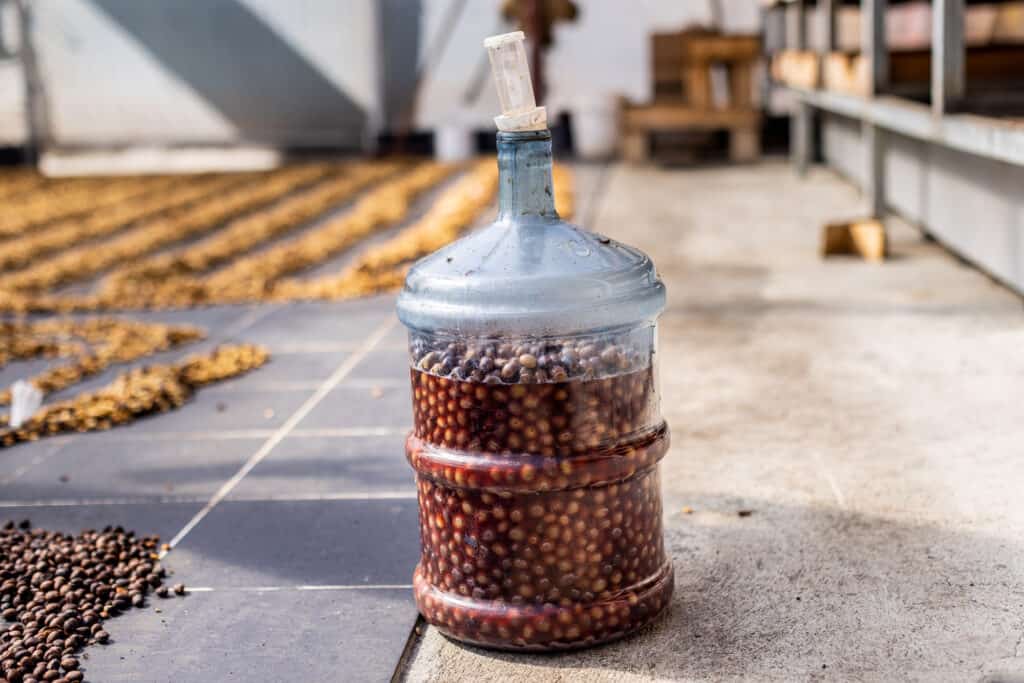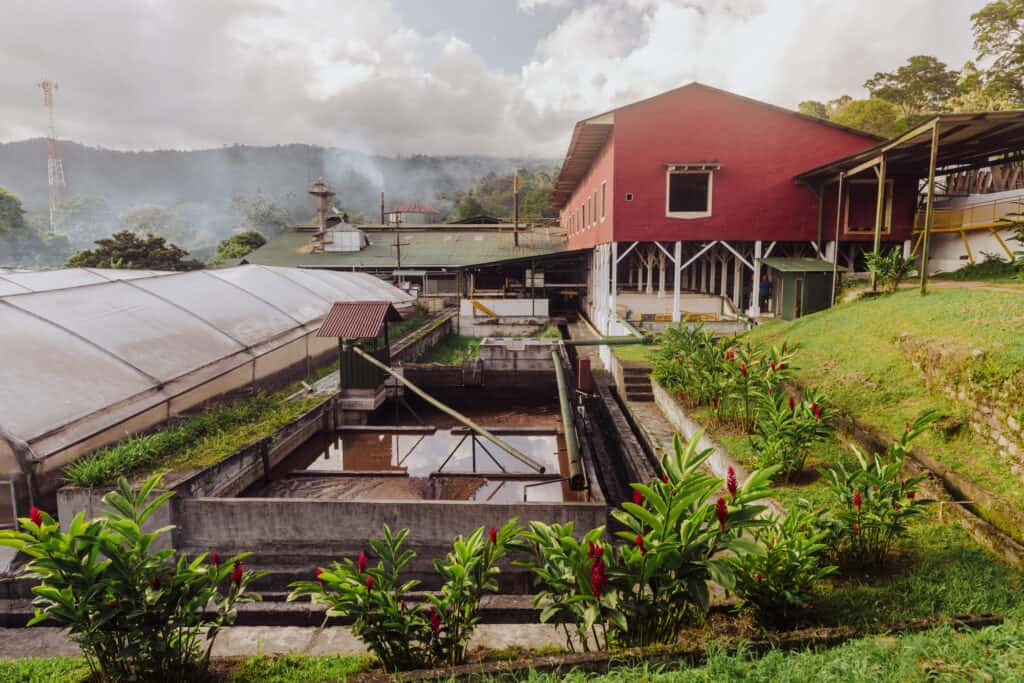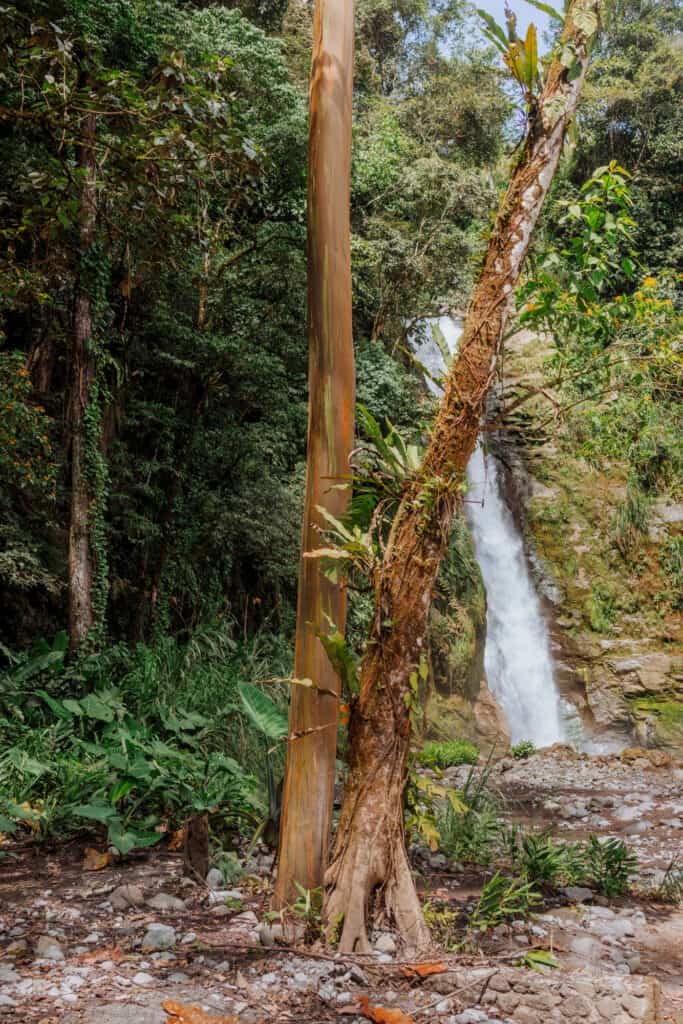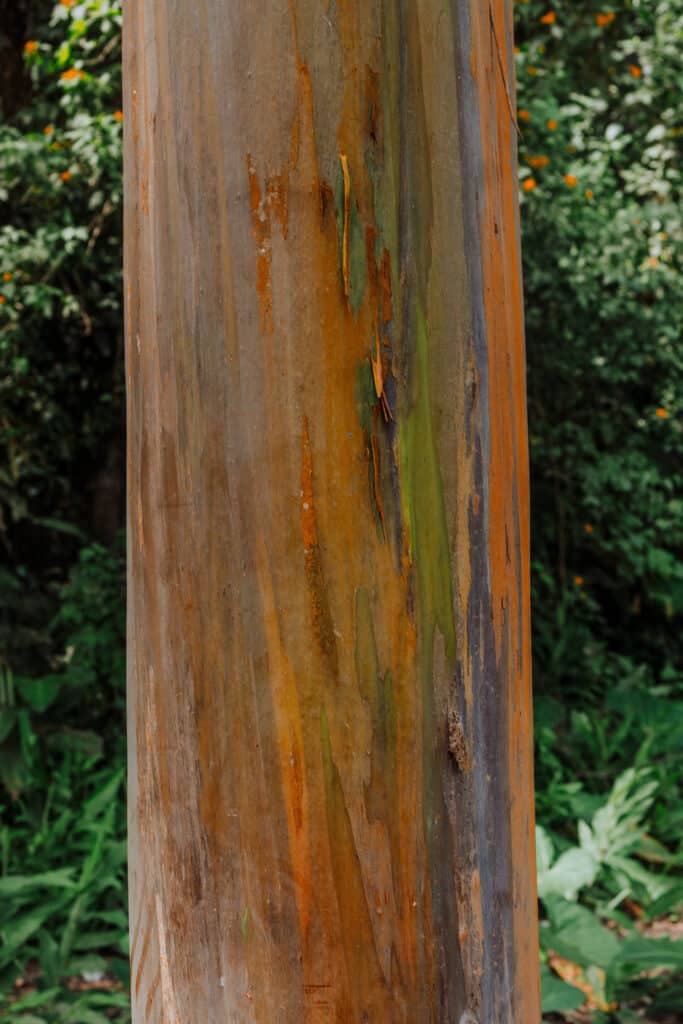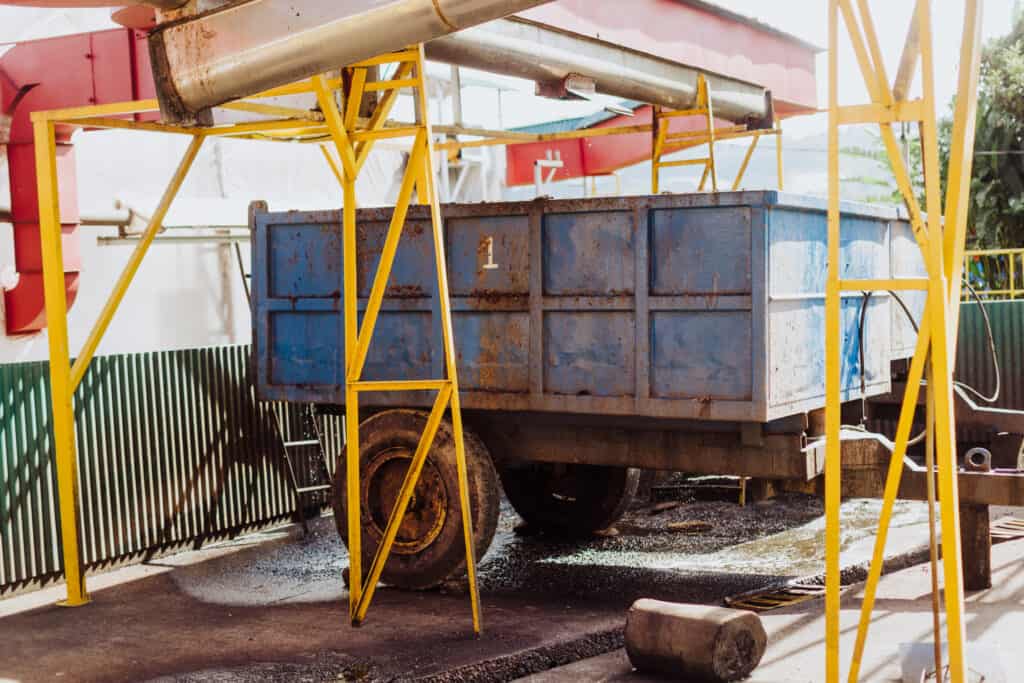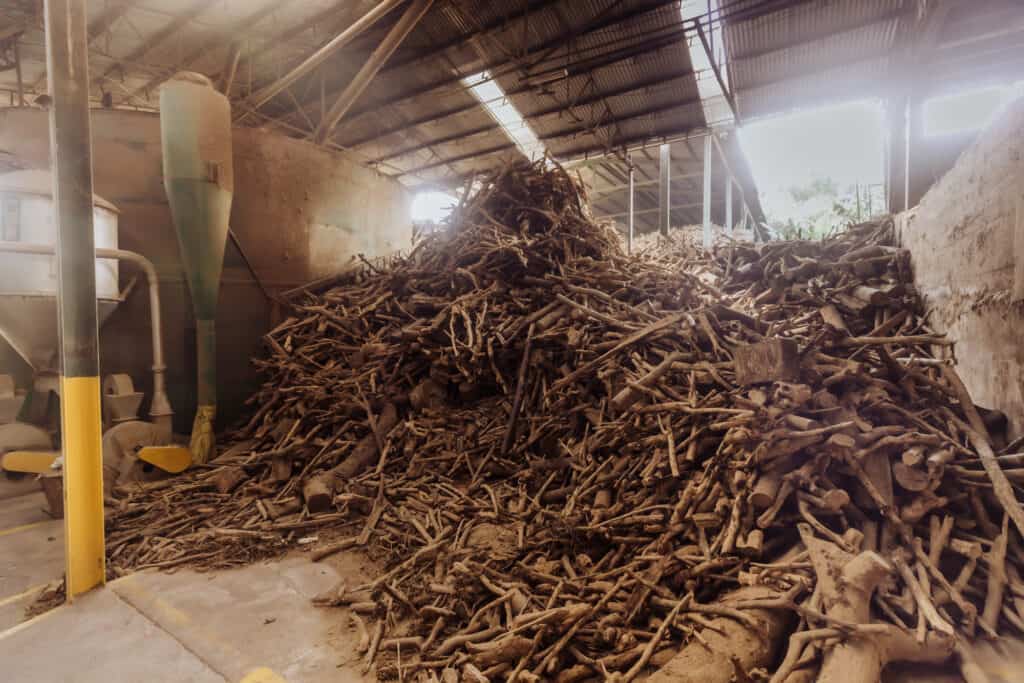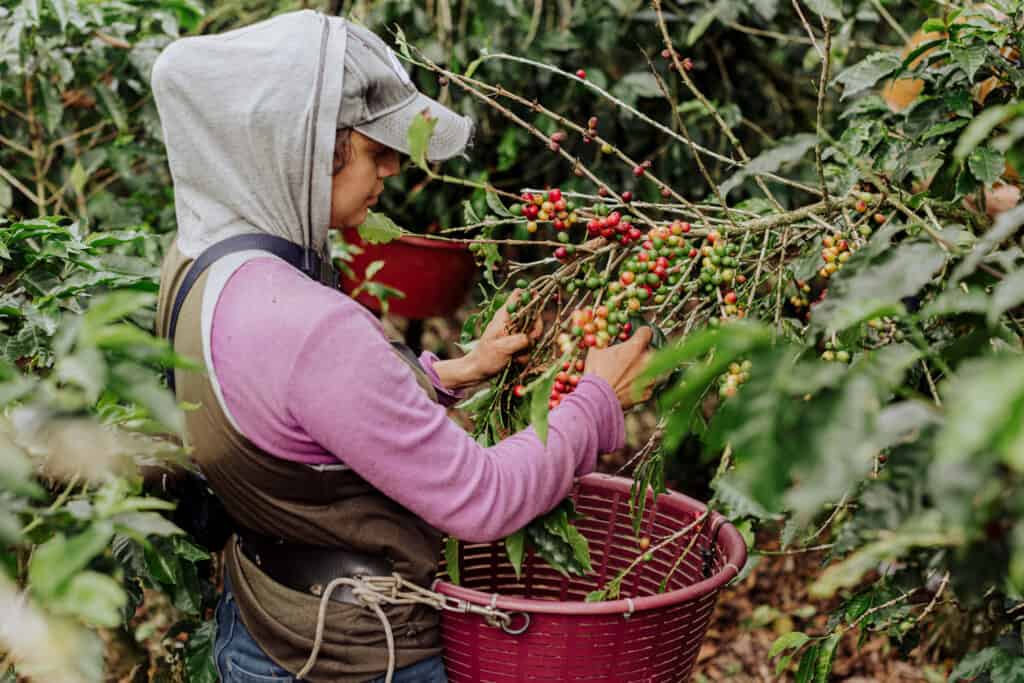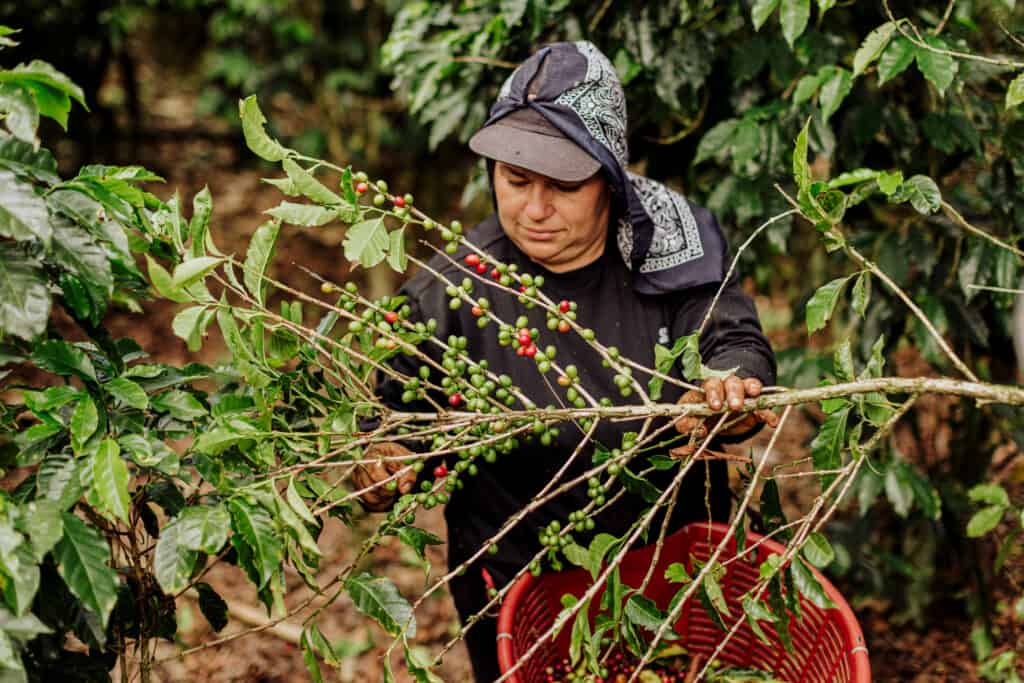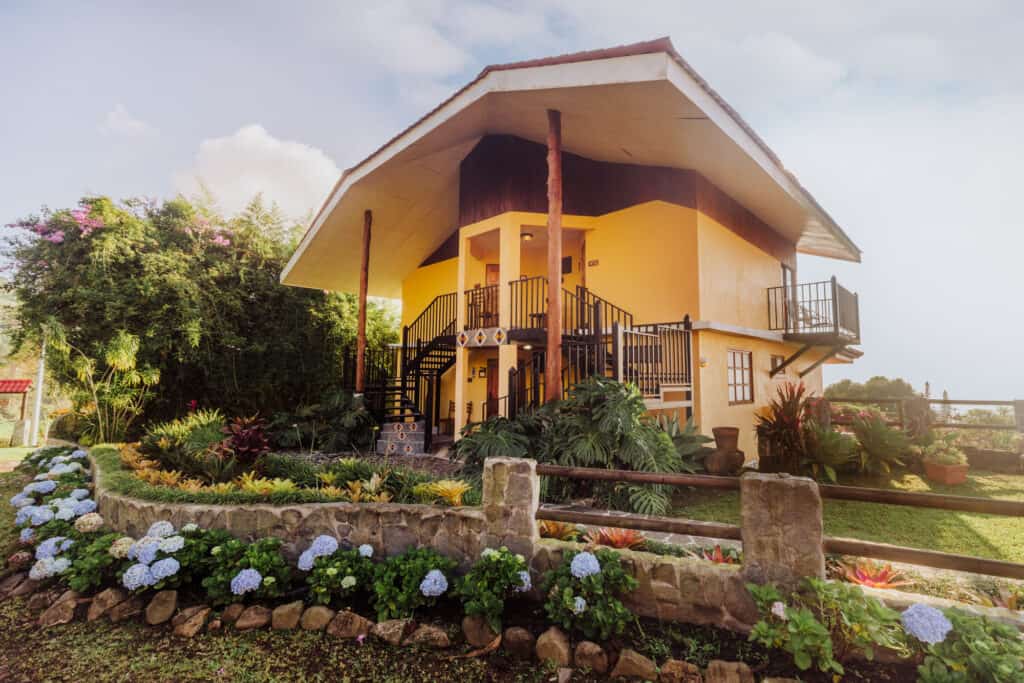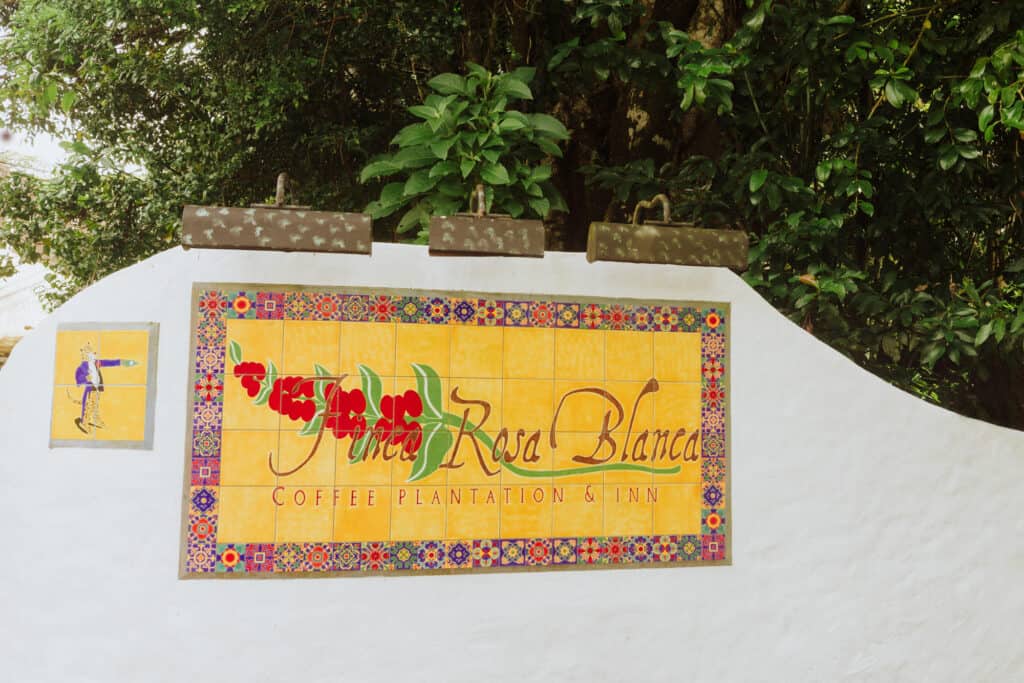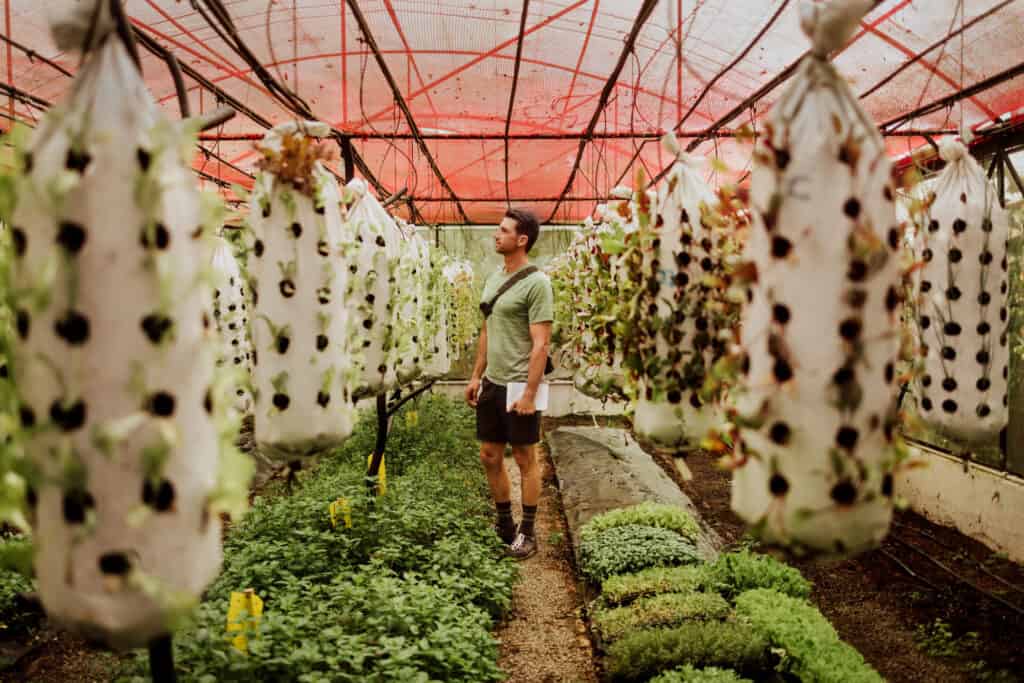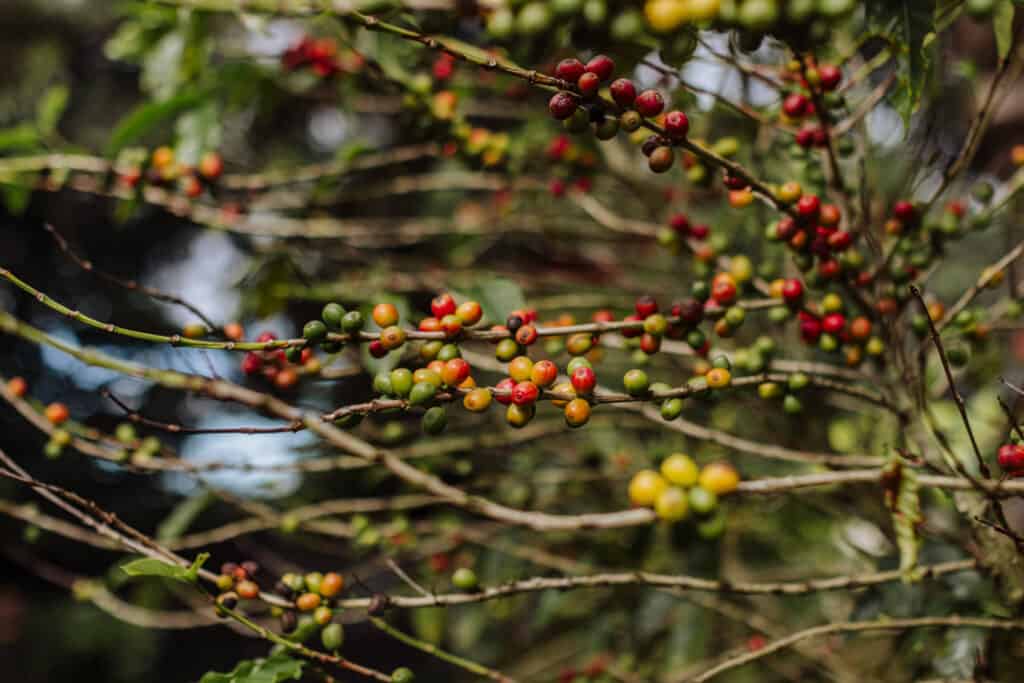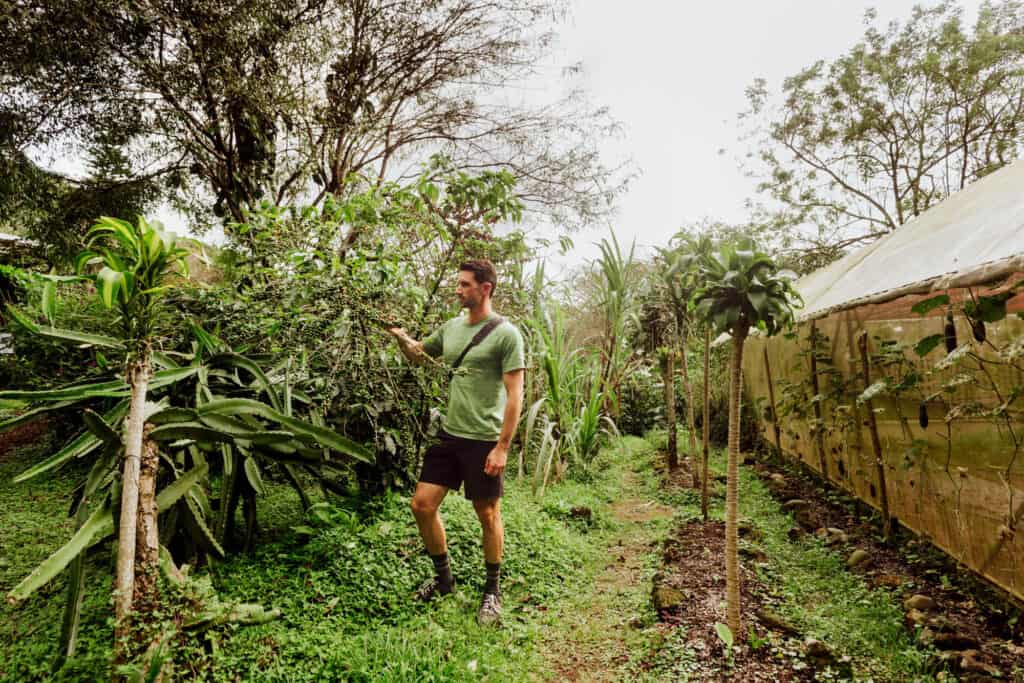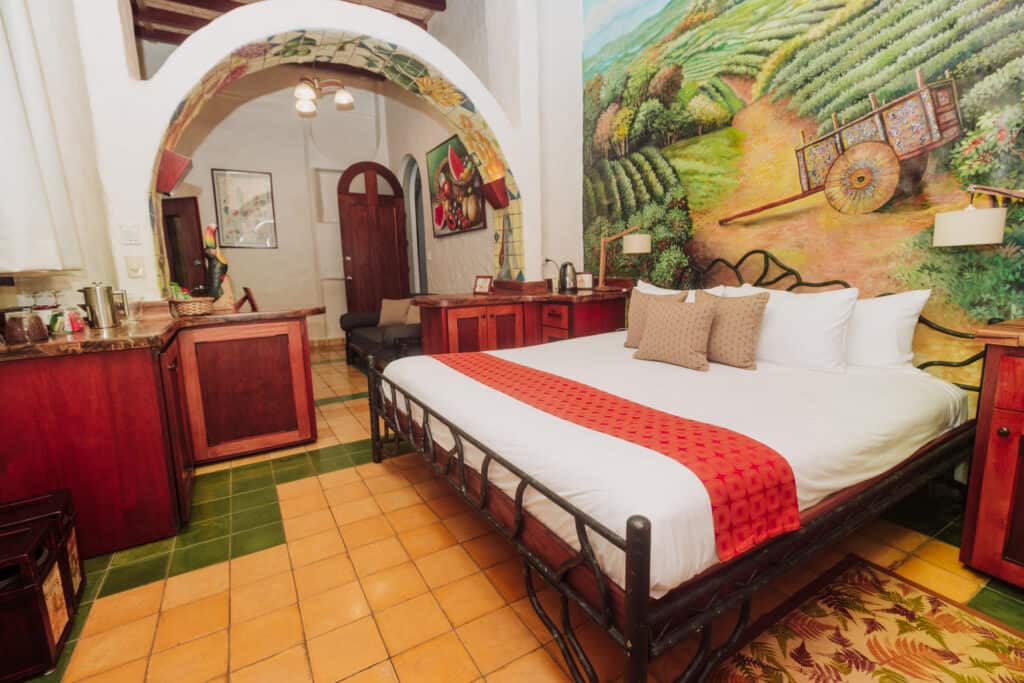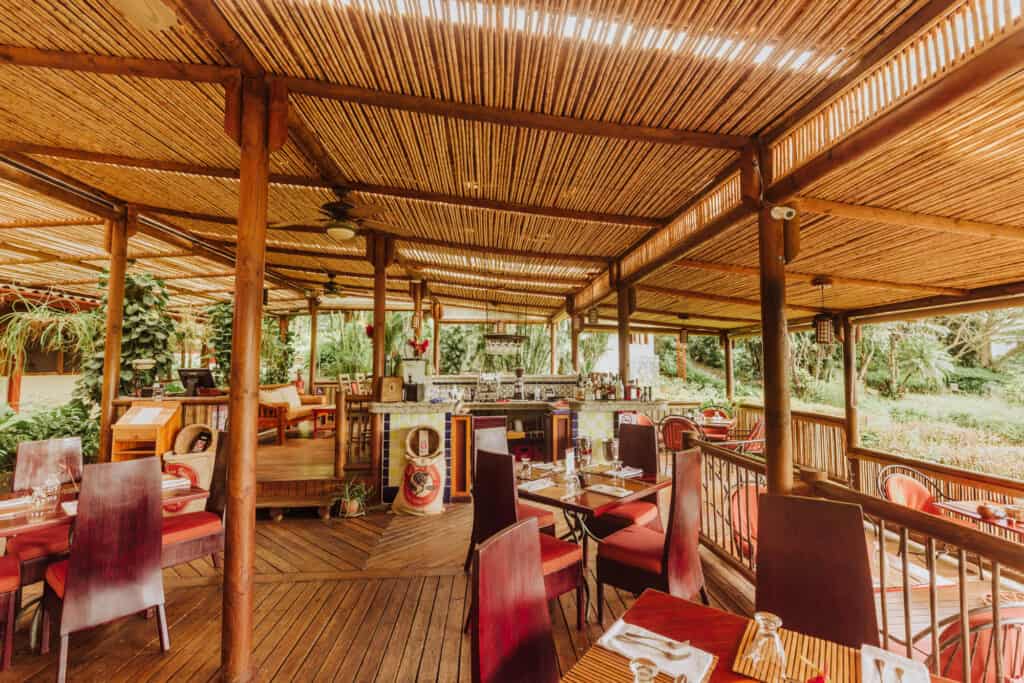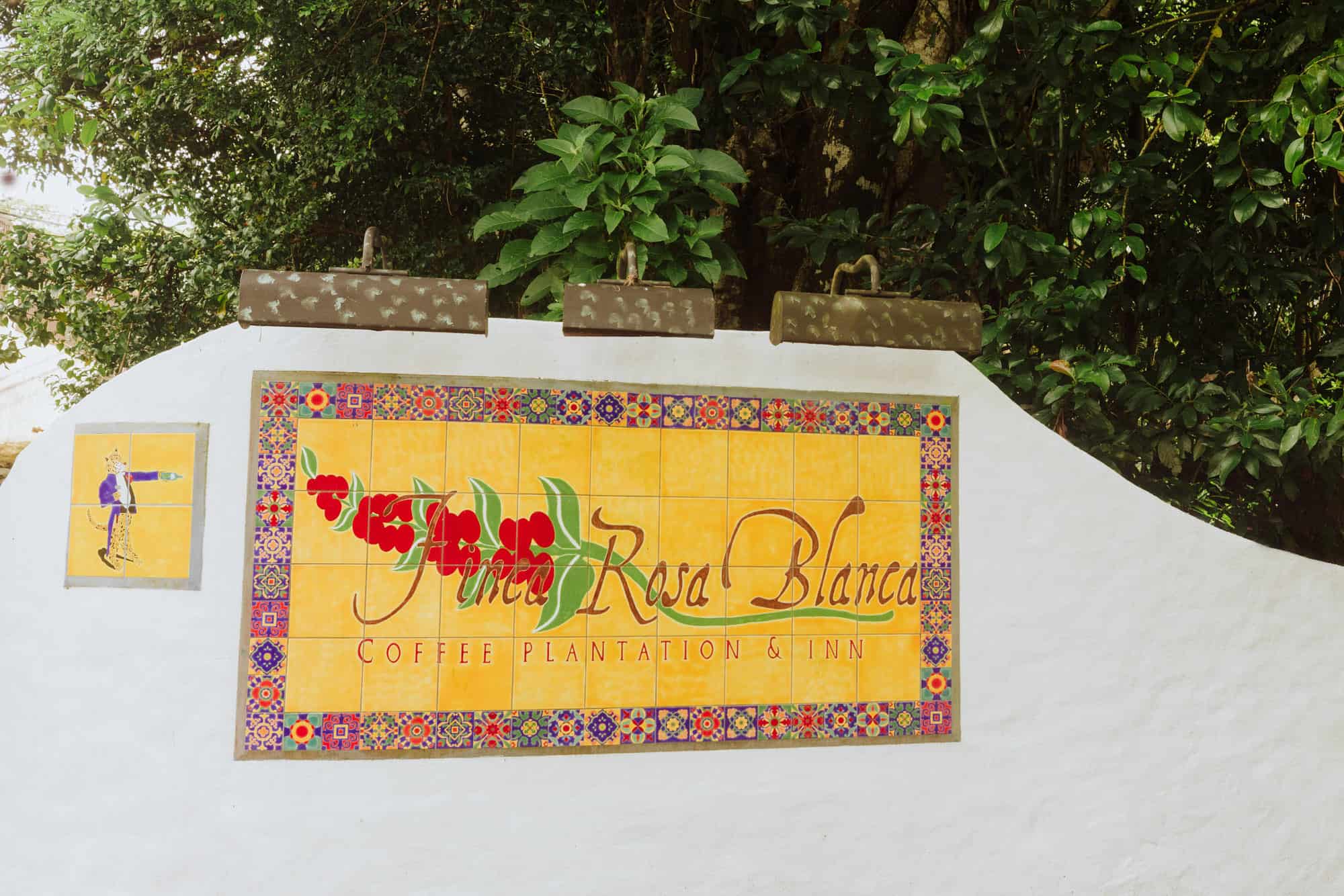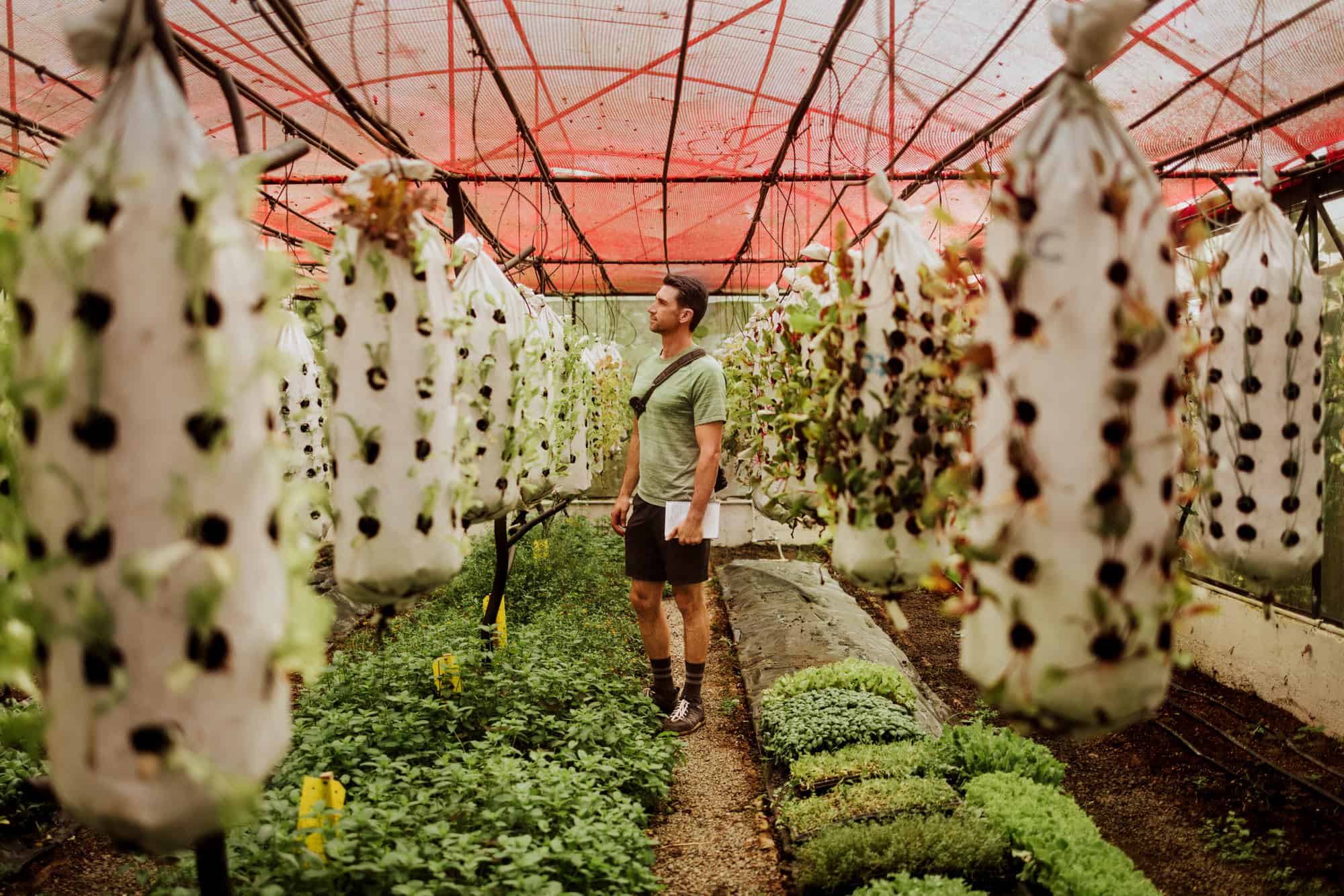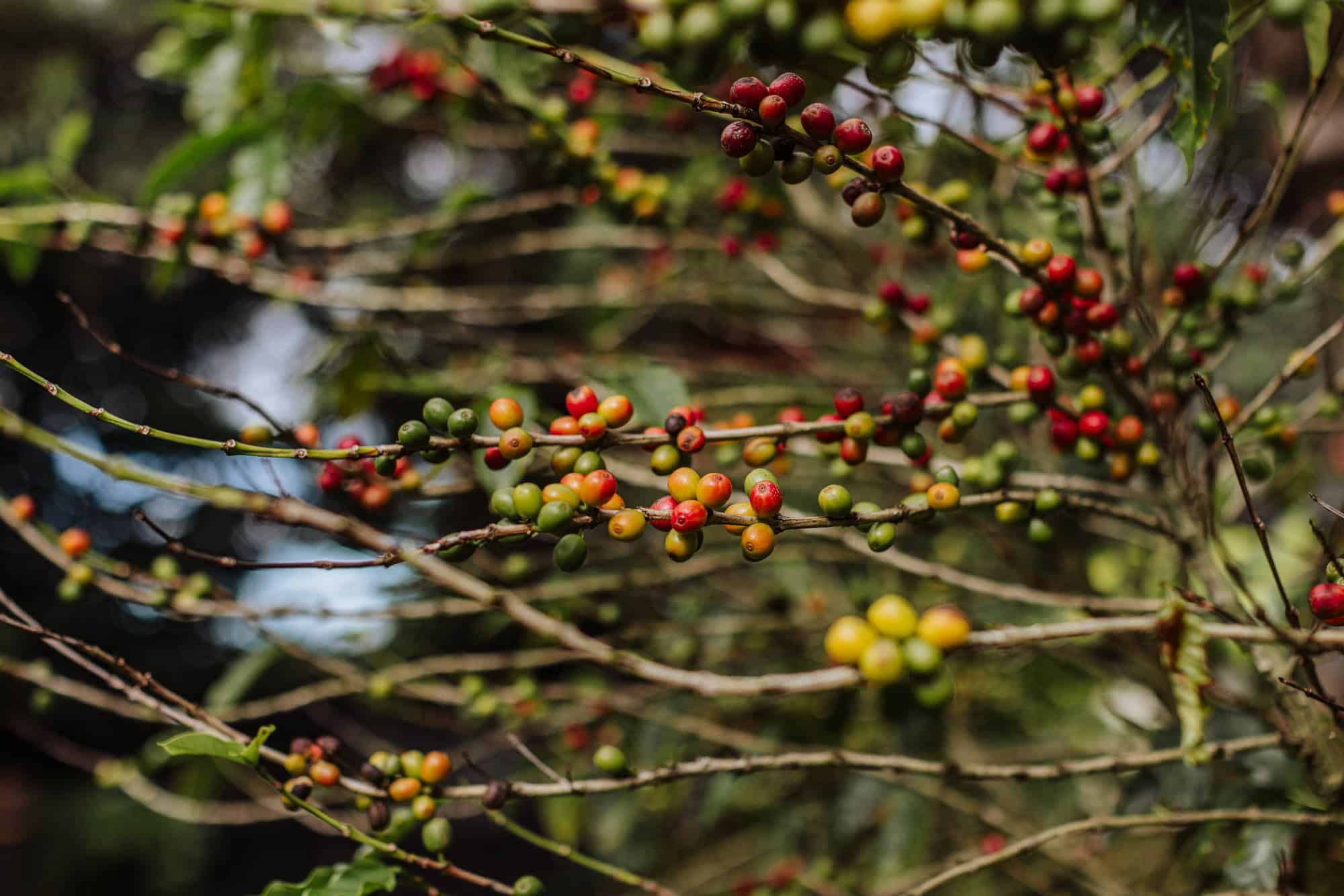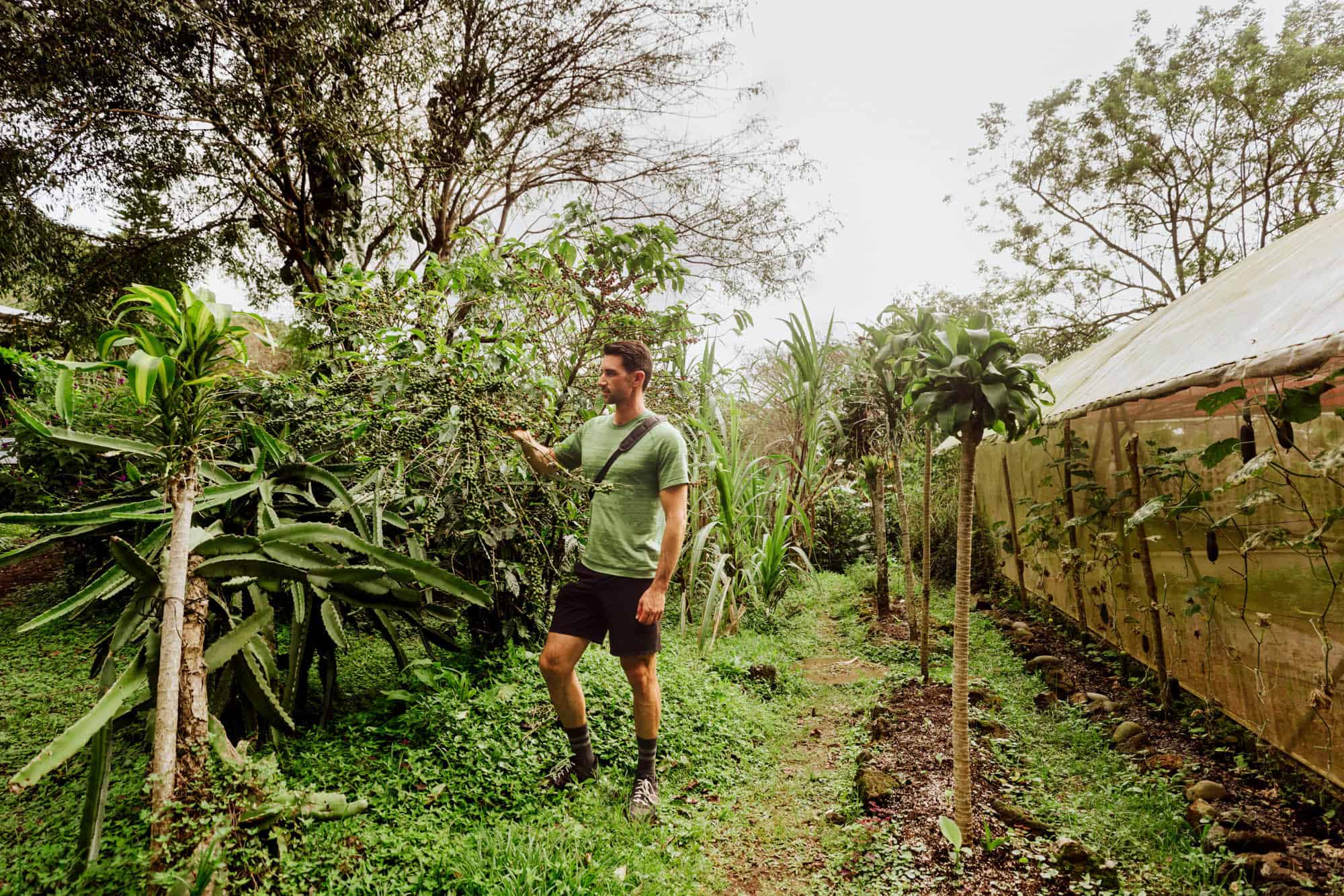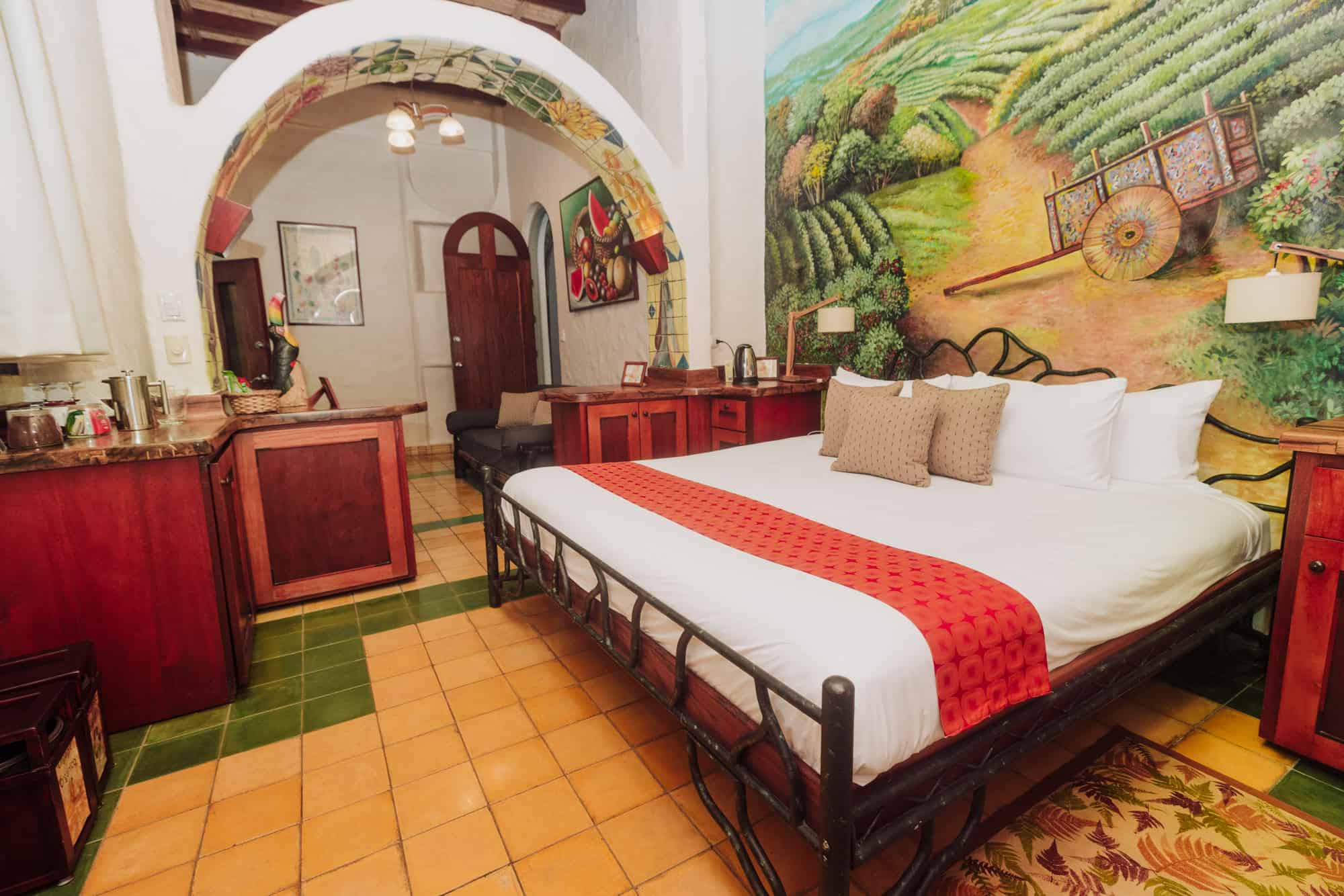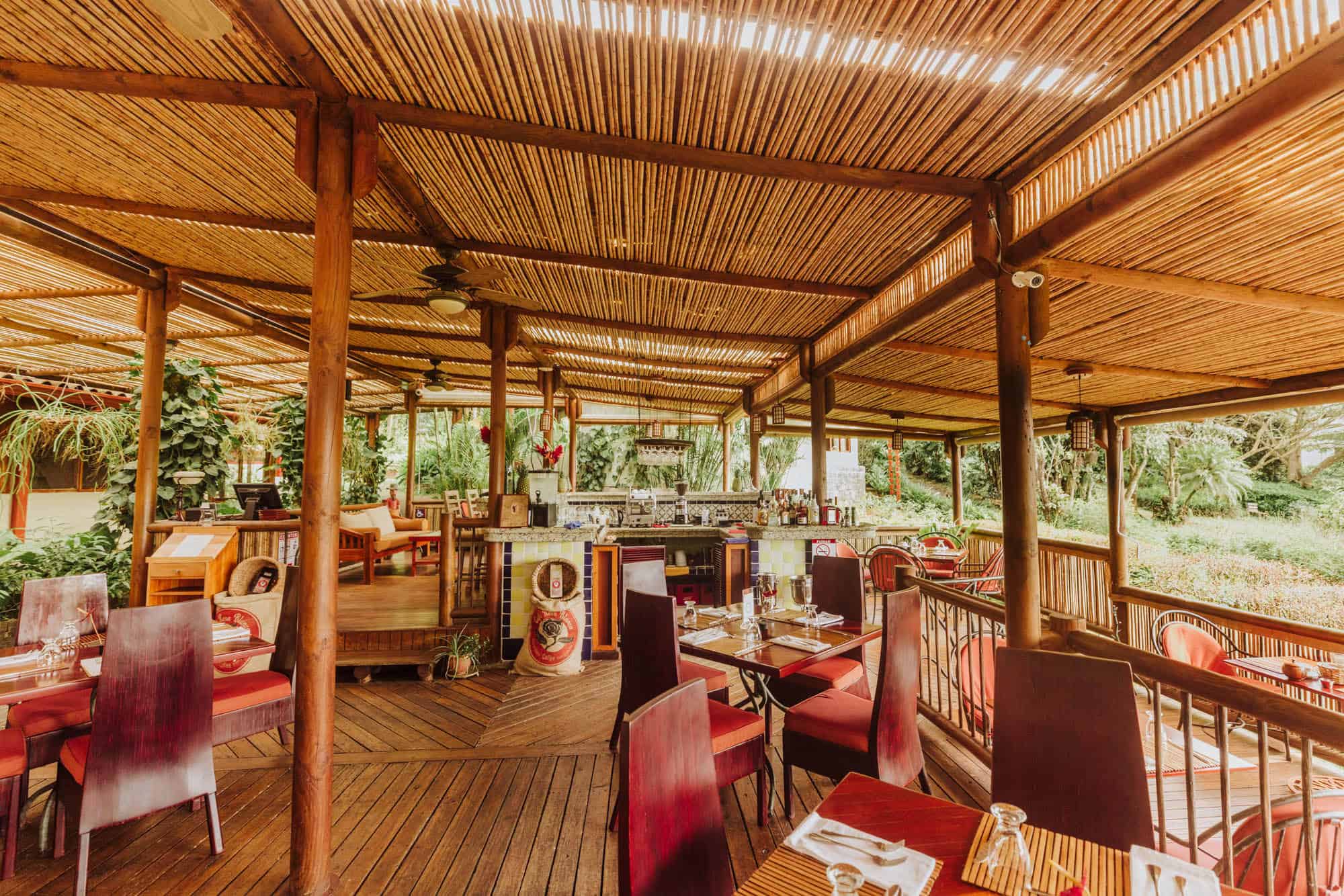Costa Rican Coffee: Biodiversity & Regenerative Farming
BY JARED DILLINGHAM
REGENERATIVE FARMING IN COSTA RICA
I went to Costa Rica to see first-hand how the country’s largest coffee farm made significant changes, which go well beyond sustainability, and found their lessons in regenerative agriculture both fascinating and encouraging!
As a life-long coffee drinker, I only recently came to truly appreciate all that goes into the bag of beans I buy at the store, or the cup I pickup in the drive-thru.
Aquiares Coffee Farm
While I thought the word “Aquiares” was water-related, and a derivative of something in Spanish, it’s actually a word from an Indigenous language in Costa Rica, which means “land between rivers.”
Aquiares is 60 kilometers east of Costa Rica’s capital, San José. It’s likely a 90 minute drive out of the city into the rural mountains and the slopes of the Turrialba Volcano.
The farm is at a higher altitude, and known for growing high-quality Arabica coffee beans.
The owners of the farm have spent more than two decades embracing more sustainable and regenerative elements to their operation. It’s a mix of environmentally-sound farming practices and social responsibility.
➡️ BOOK: Full Day: Aquiares Coffee Farm
➡️ BOOK: Aquiares Horseback Tour, Coffee Tasting, Waterfall
➡️ BOOK: Visit Aquiares Coffee Farm (two-hour)
🌎 Jared’s Detours BLOG: Costa Rica’s Best Coffee Farm Tours
Climate Change and Coffee
Climate change is impacting coffee growers in different regions around the world in different ways.
Costa Rican growers say a primary problem they’re having is rainfall. Rainy seasons used to come like clockwork, and were well-defined in certain months. In recent years, it’s become unpredictable.
In 2021, the coffee bean yield at Aquiares was cut in half, after unexpectedly heavy rainfall in April and May damaged the crop by ruining too many flowers on the plants which then failed to become cherries.
Regenerative Agriculture
It’s Not a Quick Fix
Costa Rica’s Farms like Aquiares are on a journey toward regeneration, through a variety of methods.
Their approach to farming once relied on a full-sun model. Two decades ago, the transition began to cultivating coffee beans under native shade trees, dispersed throughout the rows of coffee plants.
In addition to sucking greenhouse gases out of the air, the native trees filter nitrogen into the soil. Plus, the leaves and seeds and fruits and branches from the trees eventually drop and turn into natural compost.
Over time, the regenerative changes to farming practices at Aquiares have naturally nourished the soil, and the entire ecosystem around the farm.
From above, you can see that Costa Rica’s coffee farms don’t look like corn fields, or really any farm fields we’re used to. The rows of coffee trees are broken up by shade trees:
Shade Trees on the Coffee Farm
Around 50,000 shade trees of different varieties have been planted to increase biodiversity on the 2300-acre coffee farm.
These days, you can find 76 species of native trees on Aquiares farmland.
The “poro” tree is a popular shade tree in Costa Rica, on both coffee and cocoa plantations. They don’t overly compete with the coffee plants for water, and drop berries which further enrich the soil.
The branches create a wide canopy over the crops below. Their leaves create the ideal amount of filtered sunlight for the cherries to grow and ripen. Too much shade leads to slower production, slower ripening, and too much pulp around the coffee bean.
The trees have lured new species of birds to the area. The staff here say the number of species of birds increases from a couple dozen to more than 140 now, with the influx of taller trees to live in.
Meanwhile, squirrels, sloths, ocelots, coyotes, and more wild animals call the Aquiares Coffee Farm home.
The Carbon Neutral Coffee Farm
The government of Costa Rica certified Aquiares as the country’s first “carbon neutral” farm.
In fact, they say they’re actually carbon *negative.*
In addition to minimizing emissions during production, the Aquiares property produces high levels of oxygen from all of the additional trees planted on the farmland.
The farm is made of 70% coffee plants and 30% other trees.
An environmental institute in France (CIRAD) operates a research station on the farm to measure greenhouse gas emissions and absorption on the farm.
Benefits of Regenerative Agriculture
Increasing biodiversity and soil fertility are major benefits, combined with a focus on the health and well-being of the surrounding community and farm worker.
Aquiares is marking 20 years certified by the Rainforest Alliance, meeting a series of environmental and social standards.
They include protecting the forest, rivers, soil, and wildlife.
Plus, certification promotes growing techniques designed to improve farmer and worker livelihoods. The certification includes a range of measures to help farmer ensure the welfare of their workers (and their families). These include on-farm health to women’s rights.
Aquiares is now the largest Rainforest Alliance Certified coffee farm in Costa Rica.
The Rainforest Alliance developed a “Regenerative Coffee Scorecard” with Nespresso, which is one of the major buyers of Aquiares coffee beans.
Aquiares went on to gain additional certifications from the government of Costa Rica, confirming the farm’s low emissions and “carbon neutral” status.
To achieve the carbon neutral certification from the government, Aquiares has to maintain an inventory of gas emissions, based on the fuel used for machinery and processing on the farm.
A separate team of experts measures the amount of greenhouse gases absorbed by the 926 hectares (2300 acres) of plants and trees on the farm.
Back to Environmentally-Friendly Basics
Aquiares uses all of the modern technology when it comes to coffee bean processing, but they also use a centuries-old method for drying the cherries and beans.
Natural sun-drying is more eco-friendly, because less water and fewer machines are involved.
The greenhouses at Aquiares use nature to process some of the cherries in big greenhouses:
The cherries are spread out on the ground for two days, then go into grated, drying beds for three weeks.
Rather than relying on the furnace and quick-drying metal tumblers for all of the coffee beans, huge batches are allowed to dry naturally in the sun.
In the first greenhouse, which is a balmy 43 degrees Celcius, you’ll smell a fruity aroma, almost like crab apples.
As you pass into a second greenhouse, you’ll notice: the cherries are yellow. They’ve been stripped of their red skin and pulp, and allowed to bake on the floor for a couple days under the sun, before being transferred to the beds to dry naturally for two weeks.
These produce more floral aromas and flavors:
The cherries in a third greenhouse begin in an oxygen-free jug with water for 24 hours, before they’re spread on the floor for two days:
They’re transferred into beds for three weeks, producing aromas with hints of wine and liquor.
This method produces coffee beans with less acidity and a more fruity aftertaste. They’re among the trendiest of coffee beans these days, according to staff at Aquiares.
Going Beyond Sustainability on the Coffee Farm
Farming is inherently resource-dependent, but Aquiares and other coffee farms in Costa Rica have developed methods to cut back on emissions and waste.
Water Conservation at Aquiares
In addition to the natural drying process described above for some of their beans, Aquiares also has its owner water treatment plant on site.
All of the water used for washing the beans is reused and sent through the treatment plant, before it runs out to a nearby lake.
I was really interested to spot several rainbow eucalyptus trees at Aquiares. The groves of the multi-colored trees on Maui are beautiful, but problematic. They were brought to the island to use as lumber, but they’ve ended up as an invasive species, spreading quickly and sucking too much of the moisture from the soil.
In Costa Rica, they’re serving a purpose on coffee farm, and actually helping regulate the moisture in the soil!
Putting Waste to Work
Aquiares uses every piece of the coffee plant and bean.
A series of blue cargo truck beds is parked at the mill. They’re filled with leftover pulp from the beans, which goes into compost for the fields.
The huge stack of wood used in the drying furnaces comes from old, dead, or dying coffee plants.
The coffee plants are cut back every 25 years, so with a couple thousand acres, there’s a constant influx of wood coming in for the fire:
Social Responsibility in Coffee Farming
Aquiares is also home to several international programs designed to help the surrounding environment and also the people who live there.
The farm and the community are mutually connected. One wouldn’t exist without the other. The owners say almost all of the full-time employees own their own homes in the hills surrounding Aquiares.
The Rainforest Alliance verifies the relationship between the farm and the community, to ensure the farm gives back and supports the community in different ways.
For one thing, the pickers (who largely come from Nicaragua) are paid daily in cash, and covered by health insurance.
Cornell University runs a partnership, which focused on a rise in diabetes in the Aquiares community. It resulted in the creation of a community farm, run by women in Aquiares, which supplies the town with vegetables.
Is Regenerative Farming Profitable?
The manager of Aquiares told the Rainforest Alliance that the quality of their coffee has improved over time, as they transitioned to a more biodiverse, regenerative farming operation. Higher quality has meant higher market value for the beans.
The Rainforest Alliance says implementing more sustainable practices lead to higher yields. Their their certification alone can bring higher market prices.
Plus, as I mentioned: some of the most trendy (and pricey) beans on the market are made through the fermented process I described earlier in the greenhouses at Aquiares.
Things to do in Turrialba
Turrialba is the closest bigger town near Aquiares. If you’re staying in the area, there are a number of adventurous things to do after visiting the coffee operation.
This is the two-hour coffee farm and tasting tour in Aquiares.
➡️ Horseback Coffee Farm Tour + Waterfall
This is the full tour of the Aquiares Coffee Farm, which includes a tasting and welcome coffee at the main house plus a horseback ride through the trees to the Aquiares Waterfall.
This is an adventure tour which includes rappelling, zip-lining, canyoneering, and more!
A guide will take you several miles down the Pacuare River from Turrialba.
This is a full-day tour of two volcanos plus Guayabo National Park.
This is a service which offers rides from the airport (SJO) to pretty much anywhere you’d like to go!
Where to Stay Around Aquiares / Turrialba
I stayed at the Guayabo Lodge, and loved both the friendly staff and the restaurant!
These three rental homes all have 5-star reviews. They look gorgeous:
➡️ 3 bedroom with wrap-around patio
➡️ 3 bedroom with modern design & views
➡️ 4 bedroom in traditional Costa Rican style
Another Rainforest Alliance Certified Coffee Farm
Alternatively, if you can’t make the drive out to Aquiares, I’d recommend Finca Rosa Blanca, which is close to the airport in San José.
It’s another environmentally-friendly, sustainable, Rainforest Alliance Certified coffee farm. Plus, Finca Rosa Blanca features 14 beautiful rooms at their guest houses, which I really enjoyed!
